The Best Knee Brace for Osteoarthritis
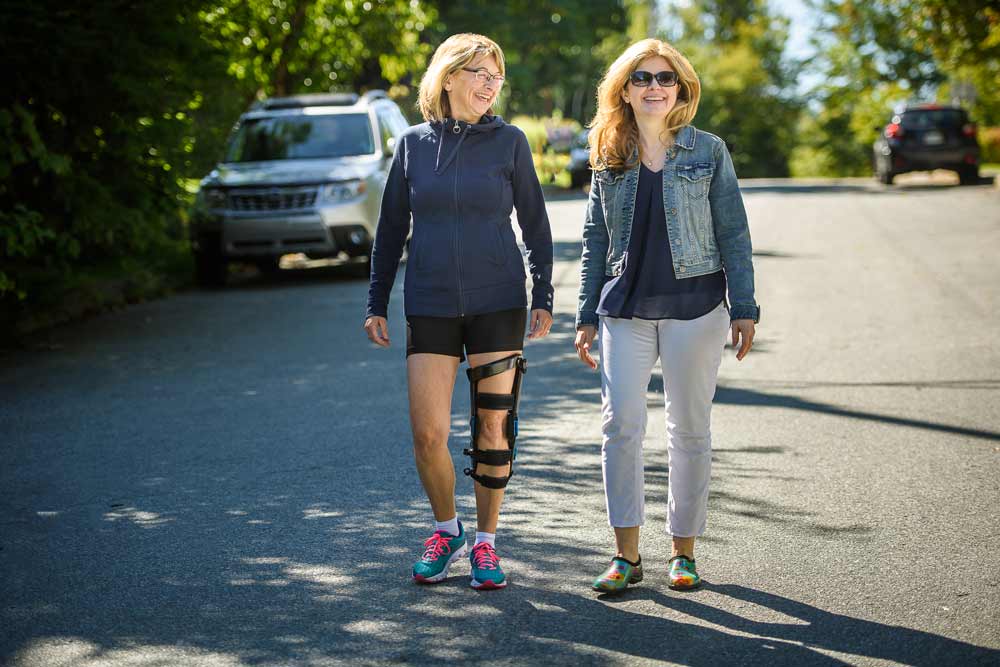
Knee braces are generally a safe, non-invasive, and cost-effective treatment option for osteoarthritis. When you find the right knee brace, putting it on should immediately improve your pain, mobility, and knee function, allowing you to get back to the activities you love. To aid your search for the best knee brace for osteoarthritis, we put together this guide breaking down the different types of bracing solutions and what each is suited for.
What You Need to Know
Severity and Location of Osteoarthritis
The knee has three compartments in which osteoarthritis (OA) can occur (Figure 1). You may have mild to severe damage from OA in one compartment or in multiple compartments. Some braces are not designed to address certain patterns of damage, so it’s essential to know the severity and location of damage before choosing a knee brace for osteoarthritis.
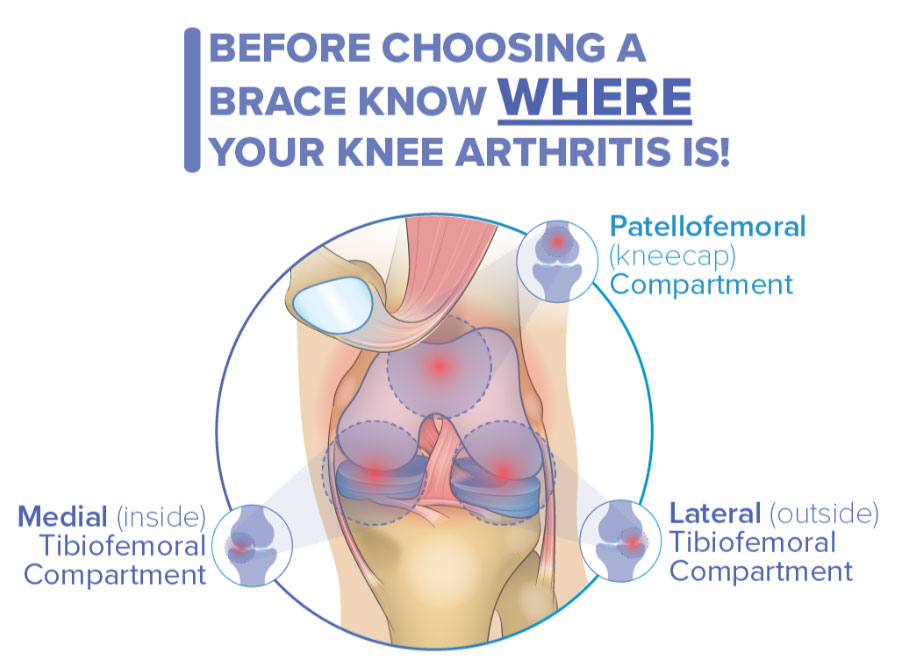
If you’re unfamiliar with the anatomy of OA, it might help to read our Guide to Severe Knee Osteoarthritis before continuing.
Why and How Knee Braces Can Help
Bone on bone contact and friction is the main cause of the pain and mobility issues experienced by many with OA. Most OA knee braces are designed to offload the joint, meaning that they reduce pressure and friction in damaged areas. Offloading decreases the amount of bone on bone contact in the knee, which helps to relieve pain, improve mobility, prevent further damage, and potentially promote healing. A combination of bracing and other conservative treatment methods such as exercise and weight loss can help you delay or avoid more invasive treatments like knee surgery.
Types of Knee Brace for Osteoarthritis
Knee Compressions Sleeves
Knee compression sleeves are usually made of elastic cotton or neoprene. The compression and warmth the garment provides can help decrease inflammation caused by osteoarthritis. Wearing a sleeve may help prevent your knee from feeling stiff and painful, especially during and after exercise. It can also help improve your sense of stability and confidence in your knee.
Offloader Knee Braces
Offloader knee braces are designed to address osteoarthritis specifically. There are two main types of offloaders: uni-compartment offloaders and tri-compartment offloaders. While both aim to improve pain, mobility, and function, they work in very different ways.
Uni-compartment Offloader Braces
The most common type of offloader knee brace is called a uni-compartment offloader. These braces work by applying force to one or both sides of the knee (Figure 2). This shifts (or offloads) pressure away from the damaged compartment towards a healthier compartment where the articular cartilage is still intact. Reduced pressure in the damaged compartment provides relief from painful bone on bone contact and cartilage degeneration. As a result, you can move more freely with fewer OA symptoms.
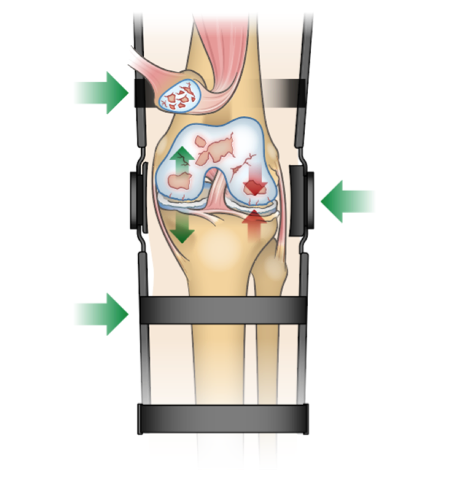
Tri-compartment Offloader Braces
A tri-compartment offloader (TCO) is a new type of offloader brace that can reduce joint forces throughout the entire knee. While uni-compartment offloaders can only offload one side of the knee (known as a tibiofemoral compartment), a TCO offers combined offloading of both sides of the knee and the knee cap (the patellofemoral compartment).
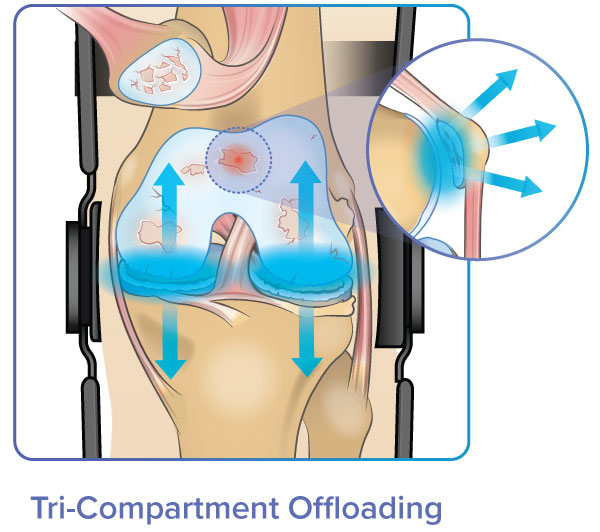
A TCO brace works like a shock absorber for your knee. When you bend your knee, a specialized hinge helps absorb body weight to reduce the load placed on your joint. It then helps power your leg muscles to assist knee extension as you straighten your leg. This allows a TCO brace to relieve pressure and pain in all three knee compartments at once, while also enhancing mobility and muscle strength.
Choosing the Best Knee Brace for Osteoarthritis
This section will help you identify the type of knee brace that will provide the most benefit based on the severity and location of your osteoarthritis.
Best Knee Brace for Mild OA
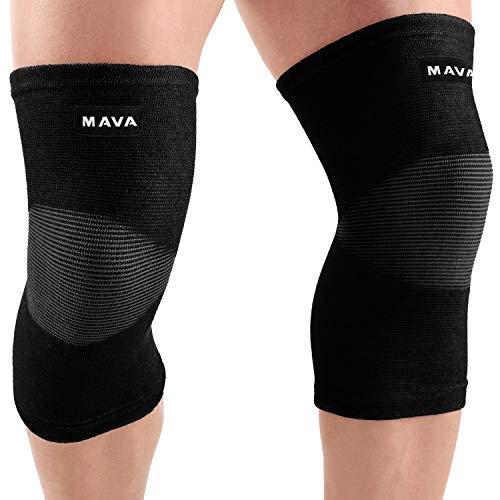
There is evidence to suggest that compression sleeves may relieve pain and improve function in those with knee osteoarthritis.1 If you have mild OA symptoms, wearing a sleeve can be a good choice. It may help you avoid the worst of the pain, inflammation, and stiffness caused by daily activities or exercise. Sleeves also have the advantage of being lighter and less bulky than offloader knee braces. That being said, sleeves aren’t as effective as offloader braces at relieving pain.2,16
If you find that a compression sleeve is not helping, or if you’ve been diagnosed with moderate to severe knee OA, then you’ll probably want to consider an offloader knee brace.
Best Knee Brace for Uni-compartmental Tibiofemoral OA
For those with moderate to severe OA in one tibiofemoral compartment of the knee, a uni-compartment offloader brace is likely the best bracing solution. They are a cost-effective and minimally invasive treatment that can reduce pain and improve functional ability.3 Most of the research on offloader braces shows that users experience an improvement in OA symptoms, most notably pain reduction.3,16
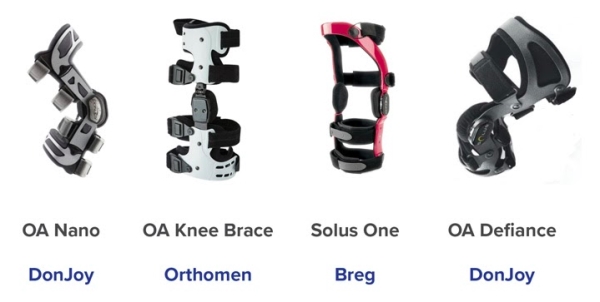
However, uni-compartment offloaders have their limitations. For example, by offloading pressure from one knee compartment, they can increase load and stress on other areas of the knee. This could lead to the progression of OA in other compartments over time.
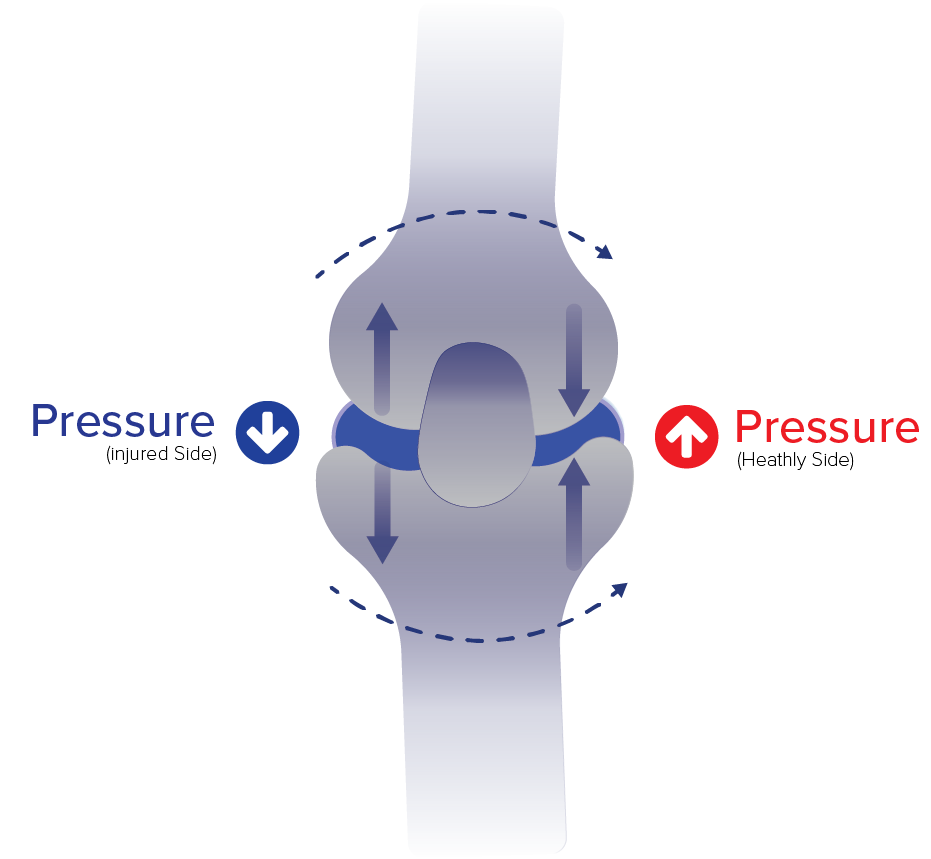
Another limitation is that they can only treat unicompartmental tibiofemoral OA, which accounts for just 3-20% of all OA cases.4,5 This means that offloaders can’t meet the needs of at least 80% of OA patients. Those with patellofemoral or multicompartmental OA should probably look for a different type of brace.
Best Knee Brace for Patellofemoral OA
Until recently, there were no knee braces designed to address patellofemoral (PF) OA, even though over half of knee OA cases involve the PF compartment.6 Conventional offloader braces can’t offload the PF compartment – they can only shift pressure from side to side between tibiofemoral compartments. Tri-compartment offloader braces are the first and only type of knee brace designed to offload the PF compartment.
Pain and symptoms of patellofemoral OA are often aggravated by activities like climbing stairs, rising from sitting, crouching, or squatting. This is because when the knee is bent and bearing weight, forces in the PF compartment increase dramatically,15 causing painful bone on bone contact and friction for those with OA (Figure 3).
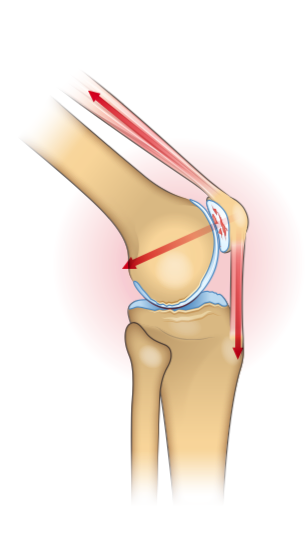
A tri-compartment offloader brace absorbs body weight as the knee bends, which decreases joint forces in the PF compartment and reduces bone on bone contact and friction (Figure 4). In a biomechanical study of a tri-compartment offloader, researchers found that the brace can reduce forces in the PF compartment by up to 46% during a knee bend.7 This amount of offloading typically results in relief from pain symptoms and improvements in function. If you’re suffering from osteoarthritis in the patellofemoral compartment, then a tri-compartment offloader could be the best brace for you.
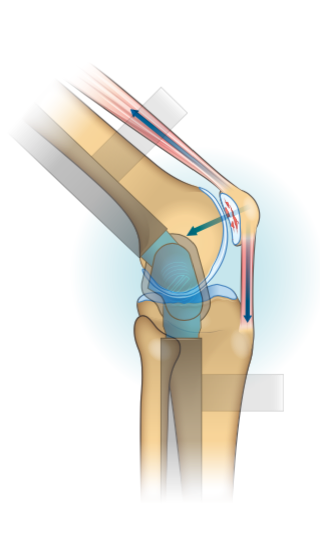
Best Knee Brace for Multicompartmental OA
The majority of OA patients have damage in multiple knee compartments.8-11 Once again, conventional uni-compartment offloader braces do not address these patterns of OA. A tri-compartment offloader is likely your best brace for multicompartmental osteoarthritis because it can offload all three knee compartments at once.
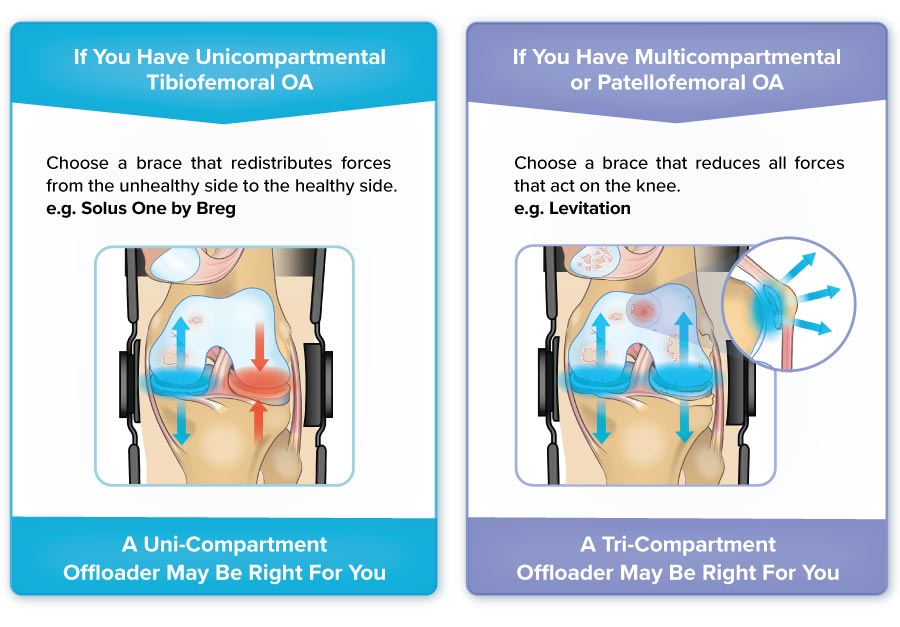
The table below compares the features of some of the best offloader braces on the market. Notice that the tri-compartment offloader (Levitation 2) is the only brace that provides total pressure relief, rapid pain relief when squatting, kneeling, and lunging, and helps to increase knee strength. These unique features make a tri-compartment offloader a better option for the treatment of multicompartmental OA.
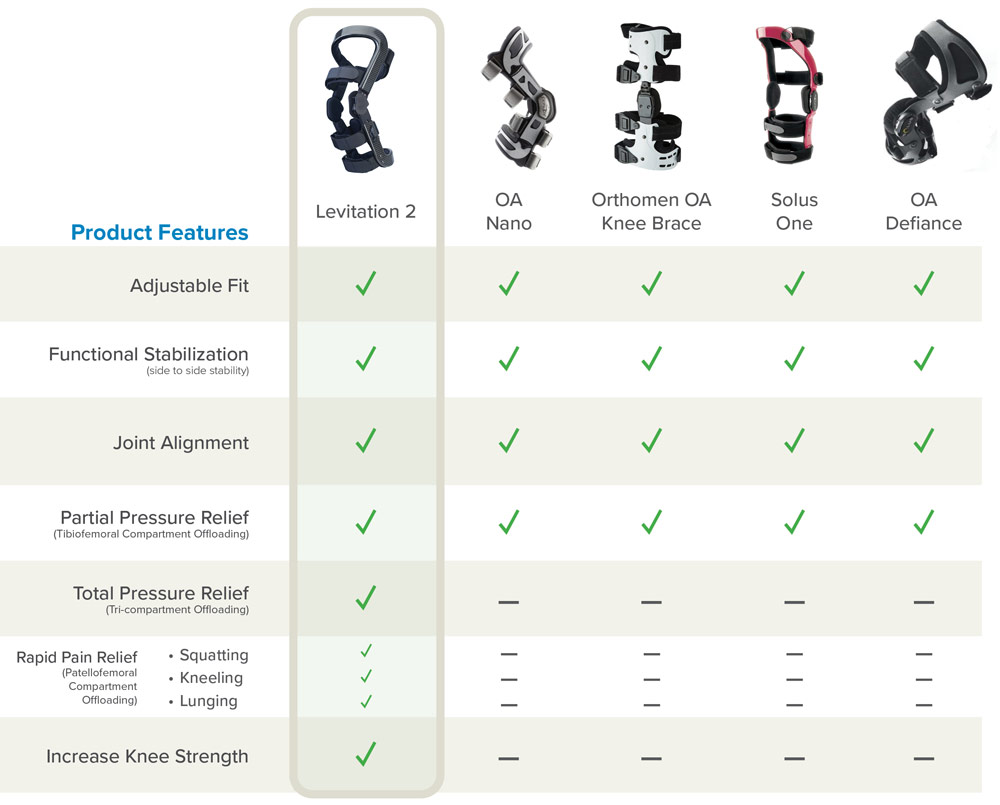
Check out the articles below for more detailed comparisons of offloader braces:
Levitation Knee Brace – A New Solution for Osteoarthritis
Spring Loaded Technology’s Levitation 2 is the world’s first tri-compartment offloader. It is one of the best knee braces for osteoarthritis, especially if you have patellofemoral or multicompartmental OA. By offloading all three knee compartments at once, Levitation can improve pain, mobility, and function like no other brace can.
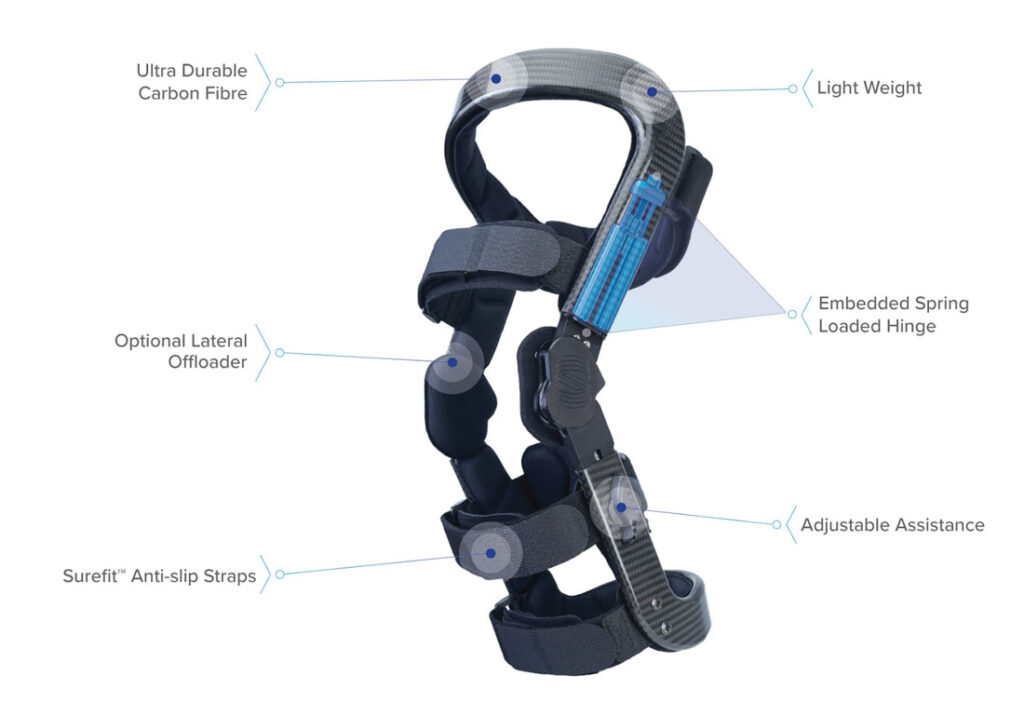
Features
Levitation’s unique features make it ideally suited for the treatment and management of knee osteoarthritis:
Total Pressure Relief
Levitation’s defining feature is its patented bionic hinge. The liquid spring absorbs force when you bend your knee, then returns that energy to assist with leg extension. This allows the brace to reduce pressure throughout the entire knee.
Rapid Pain Relief
By decompressing the entire joint simultaneously, Levitation reduces bone on bone contact in the knee, immediately relieving pain symptoms caused by OA. If you have a misalignment of the knee, the optional pneumatic offloader can be added to Levitation to realign the knee. This further reduces pain and improves strength and stability.
Added Power
Quadricep muscle strength is a key determinant of pain severity and function in those with OA.15 Levitation’s bionic hinge assists knee extension, powering your leg muscles so you can be active for longer and increase your leg strength. The amount of energy returned by the spring is adjustable. As your strength increases and pain decreases, the power can be dialled back or turned off altogether.
Clinical Benefits of Levitation
Weight Loss
Weight loss is considered to be an effective non-surgical treatment option for improving OA symptoms. For clinically meaningful improvements in pain and function, a 10-20% reduction in body weight is required, with the most benefit seen in patients who lose more than 20% of their body weight.12 Research has shown that Levitation can reduce joint contact forces in all three knee compartments by over 40% during a deep knee bend7 which is equivalent to a level that would be achieved by losing 45 pounds of body weight.13 Putting on Levitation is essentially the same as instantly losing 45 lbs, which for most people is above 20% of their body weight. This means the brace can provide immediate and lasting pain relief from OA, which may allow you to be more active and adhere to an exercise or weight loss program for further benefits.
Pain Relief
Preliminary evidence shows that Levitation is very effective at reducing knee pain in those with osteoarthritis.14 In a systematic survey of Levitation brace users with knee OA, 95% reported significantly reduced pain since using the brace. Of those who were regularly using pain medications before Levitation, 47% were able to reduce or eliminate their use of the medications.
Improved Mobility and Quality of Life
According to preliminary data, 85% of Levitation brace users experience mobility improvements and 86% report an improvement in their quality of life.14 Users also reported an increase in their physical activity levels by an average of 8 hours per week. This is important since exercise can be an excellent non-surgical treatment for improving OA symptoms.
Testimonials
Levitation has helped people all over the world to overcome severe knee OA and get back to doing the things they love. Check out the videos below to hear why Levitation users think it’s the best knee brace for osteoarthritis.
To see more customer stories, visit the Levitation product page.
Learn More
Levitation can be a great choice to include in a treatment plan for osteoarthritis. Ask your doctor about tri-compartment offloader knee braces and whether they may be right for you.
To learn more about how the Levitation knee brace works, check out the video below.
If you think Levitation might be the best knee brace for you, please feel free to contact a bracing specialist by clicking the button below.
We hope this information helped narrow down your search for a knee brace. If you have more questions, our complete guide to choosing a knee brace might be helpful. Before making a final decision, we recommend you have a conversation with your doctor or other healthcare professional to get their advice on which knee brace is best for you.
References
- Bryk, F. F., Jesus, J.F., Fukuda, T.Y., Moreira, E.G., Marcondes, F.B., Santos, M.G. (2011) Immediate effect of the elastic knee sleeve use on individuals with osteoarthritis. Rev Bras Reumatol. 2011 Sep-Oct;51(5):440-6.
- Chew, K. T., Lew, H. L., Date, E., & Fredericson, M. (2007). Current evidence and clinical applications of therapeutic knee braces. American Journal of Physical Medicine & Rehabilitation, 86(8), 678-686.
- Richard Steadman, J., Briggs, K. K., Pomeroy, S. M., & Wijdicks, C. A. (2014). Current state of offloading braces for knee osteoarthritis. Knee Surgery, Sports Traumatology, Arthroscopy, 24(1), 42-50.
- Heekin, R. D. and Fokin, A. A. (2014). Incidence of bicompartmental osteoarthritis in patients undergoing total and unicompartmental knee arthroplasty: is the time ripe for a less radical treatment? J. Knee Surg. 27(1): 77–82.
- Shahid, M. K., Al-Obaedi, O., & Shah, M. (2018). Prevalence of compartmental osteoarthritis of the knee in an adult patient population: A retrospective observational study. EC Orthopaedics, 9(10), 774–780.
- Hart, H.F., Stefanik, J.J., Wyndow, N., et al. (2017). The prevalence of radiographic and MRI-defined patellofemoral osteoarthritis and structural pathology: a systematic review and meta-analysis. B. J. Sports Med. 51(16): 1195-1208.
- McGibbon, C.A., Brandon, S., Bishop, E.L., Cowper-Smith, C.D., and Biden, E. (2020). Biomechanical study of a tricompartmental offloader brace for patellofemoral or multicompartment knee osteoarthritis. Frontiers in Bioengineering and Biotechnology, 8.
- McAlindon, T., Zhang, Y., Hannan, M., Naimark, A., Weissman, B., Castelli, W., & Felson, D. (1996). Are risk factors for patellofemoral and tibiofemoral knee osteoarthritis different?. J Rheumatol, 23(2), 332-337.
- Duncan, R. C., Hay, E. M., Saklatvala, J., & Croft, P. R. (2006). Prevalence of radiographic osteoarthritis – it all depends on your point of view. Rheumatology, 45(6), 757–760.
- Stefanik, J. J., Guermazi, A., Roemer, F.W., et al. (2016). Changes in patellofemoral and tibiofemoral joint cartilage damage and bone marrow lesions over 7 years: the Multicenter Osteoarthritis Study. Osteoarthritis Cartilage, 24(7), 1160-1166.
- Lankhorst, N.E., Damen, J., Oei, E.H, et al. (2017). Incidence, prevalence, natural course and prognosis of patellofemoral osteoarthritis: the Cohort Hip and Cohort Knee study. Osteoarthritis Cartilage, 25(5), 647-653.
- Messier, S.P., Resnik, A.E., Beavers, D.P., Mihalko, S.L., Miller, G.D., Nicklas, B.J., DeVita, P., Hunter, D.J., Lyles, M.F., Eckstein, F., Guermazi, A., and Loeser, R. F. (2018) Intentional Weight Loss in Overweight and Obese Patients With Knee Osteoarthritis: Is More Better? Arthritis Care Res. (Hobokin). 70(11): 1569–1575.
- Budarick, A.R., MacKeil, B. E., Fitzgerald, S., and Cowper-Smith, C.D. (2020). Design evaluation of a novel multicompartment offloader knee brace. Journal of Biomechanical Engineering, 142(1).
- Budarick, A.R., Bishop, E.L., and Cowper-Smith, C.D. (2020). Preliminary evaluation of a new orthotic for multicompartment knee osteoarthritis: a retrospective pilot survey. Journal of Prosthetics and Orthotics. Under Peer Review.
- Hinman, R. S., & Crossley, K. M. (2007). Patellofemoral joint osteoarthritis: An important subgroup of knee osteoarthritis. Rheumatology, 46(7), 1057-1062.
- Gohal, C., Shanmugaraj, A., Tate, P., Horner, N. S., Bedi, A., Adili, A., & Khan, M. (2018). Effectiveness of valgus offloading knee braces in the treatment of medial compartment knee osteoarthritis: A systematic review. Sports Health: A Multidisciplinary Approach, 10(6), 500-514.